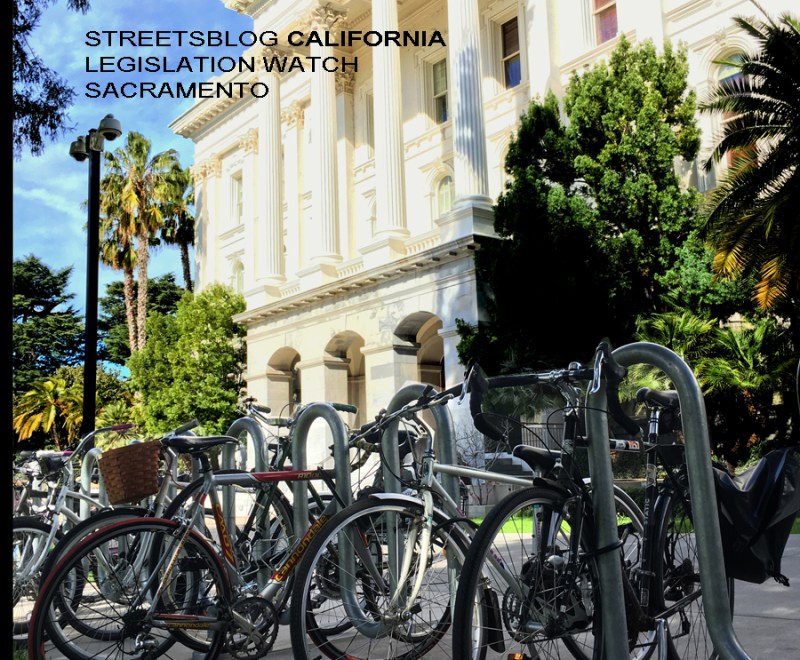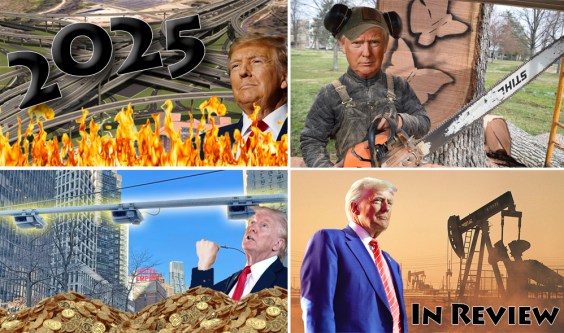The next phase of the CA legislative session is kicking into gear as bills move into the next round of committee hearings. Today, the Assembly Natural Resources Committee made quick work of several bills.
Transit, Bike, and Pedestrian Space in Coastal Areas
S.B. 689 from Senator Catherine Blakespear would eliminate the need for extra traffic studies when a local government wants to convert an existing vehicle lane within a coastal area to a bike lane, transit lane, or pedestrian walkway.
The point of the bill, according to its author, is to eliminate unnecessary delays created because of extra layers of bureaucracy, in this case specifically from the Coastal Commission's existing rules. The bill's analysis pointed to a case in San Diego, reported by KPBS, where the city developed plans to give Loma Boulevard a road diet and add a separated bike lane to increase safety for bike riders. However, the plan hit a roadblock because it would have required rewriting San Diego's Local Coastal Program, including new traffic analysis and seeking approval from the Coastal Commission. The extra costs and delays threatened to scuttle the bike lanes.
Senator Blakespear also pointed to her time as Mayor of Encinitas, where "we built several [bike lane] projects that were expensive and time consuming because of the extra bureaucratic process. Good governance requires getting rid of obstacles," she said. A representative of the Coastal Commission showed up to voice support for the law change. No opposition was heard at the hearing.
S.B. 689 passed with ten votes in favor and will now be heard by the Senate Transportation Commission.
Are VMT Measures Useful in Rural Areas?
Under S.B. 743, California began a long process of changing the way it measures environmental impacts from traffic. The state, under the guidance of the Governor's Office of Planning and Research, settled on measuring vehicle miles traveled (VMT) to get at how much travel increases as a result of building roads and developments.
Rural and sprawl areas have been crying foul ever since, saying that the VMT impact fees suggested as mitigations only make housing more expensive. This, they argue, is especially true in rural areas where demand is high, costs are lower, and commutes are longer.
Senator Anna Caballero introduced S.B. 768 as a way to give rural areas a way out of having to measure VMT, but along the way it has been amended to call for a study of "how vehicle miles traveled is used as a metric for measuring transportation impacts pursuant to the California Environmental Quality Act (CEQA)."
Caballero said the new VMT requirements have "created a real stress and strain on rural communities," driving up the costs of developing housing.
"Requiring a VMT measure in an area that is not congested and where people are moving to from high-cost regions means you are penalizing the communities that are trying to build housing for their own workforce, and experiencing an influx from people moving farther away, and you are also penalizing people who will buy those new homes," said Caballero.
The study "will analyze what other measures we can [use] that can help us meet climate needs, while mitigating other problems that arise," she said.
There was no opposition among committee members or members of the public. Indeed, further study of VMT impacts and potential climate mitigations would be useful.
But Assemblymember Laura Friedman warned that VMT "is incredibly important; it is the only metric we have to quantify whether developments are sprawl projects. We are trying to mitigate with VMT fees to create more transit."
Other members scoffed at the usefulness of transit in rural areas. "It would be great if we had some of the public transportation that the Assemblymember is talking about," said Assemblymember Jim Wood, "but we don't."
But, said Friedman, when she has visited farm communities in the Central Valley, she said residents there "were very clear that they wanted more public transportation. People couldn't access what they needed because of a lack of public transportation. It's more important that we think about VMT in these areas than in urban areas, where people can more easily walk to get around. We can't just say we have to accommodate [sprawl]," she added. "We all have to take this very seriously. All of our climate goals are based on a substantial decrease in VMT."
The bill passed with ten votes, and now will go on to the Senate Appropriations Committee.






